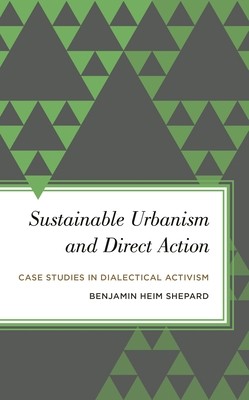
- We will send in 10–14 business days.
- Author: Benjamin Heim Shepard
- Publisher: Rowman & Littlefield Publishers
- Year: 2017
- Pages: 288
- ISBN-10: 1783483156
- ISBN-13: 9781783483150
- Format: 15.2 x 22.9 x 1.8 cm, kieti viršeliai
- Language: English
- SAVE -10% with code: EXTRA
Reviews
Description
Urban activism can manifest in many guises, from community gardening to mass naked bike rides. But how might we theorize the evidence of the collisions between social forces that take place in our streets and public commons? Cities are formed through these collective collisions in time. This book draws on the author's own vast experience as an activist to make links between a theory of practice with rich discussion of the histories of conflicts over public space. Each chapter examines activist responses to a range of issues that have confronted New Yorkers, from the struggle for green space and non-polluting transportation, to housing and the fight for sexual civil liberties. The cases are shaped through interplay between multiple data sources, including the author's own voice as an observing participant, as well as interviews with other participant activists, historic accounts and theoretical discussion. Taken together, these highlight a story of urban public space movements and the ways they shape cities and are shaped by history.
EXTRA 10 % discount with code: EXTRA
The promotion ends in 23d.08:11:03
The discount code is valid when purchasing from 10 €. Discounts do not stack.
- Author: Benjamin Heim Shepard
- Publisher: Rowman & Littlefield Publishers
- Year: 2017
- Pages: 288
- ISBN-10: 1783483156
- ISBN-13: 9781783483150
- Format: 15.2 x 22.9 x 1.8 cm, kieti viršeliai
- Language: English English
Urban activism can manifest in many guises, from community gardening to mass naked bike rides. But how might we theorize the evidence of the collisions between social forces that take place in our streets and public commons? Cities are formed through these collective collisions in time. This book draws on the author's own vast experience as an activist to make links between a theory of practice with rich discussion of the histories of conflicts over public space. Each chapter examines activist responses to a range of issues that have confronted New Yorkers, from the struggle for green space and non-polluting transportation, to housing and the fight for sexual civil liberties. The cases are shaped through interplay between multiple data sources, including the author's own voice as an observing participant, as well as interviews with other participant activists, historic accounts and theoretical discussion. Taken together, these highlight a story of urban public space movements and the ways they shape cities and are shaped by history.


Reviews